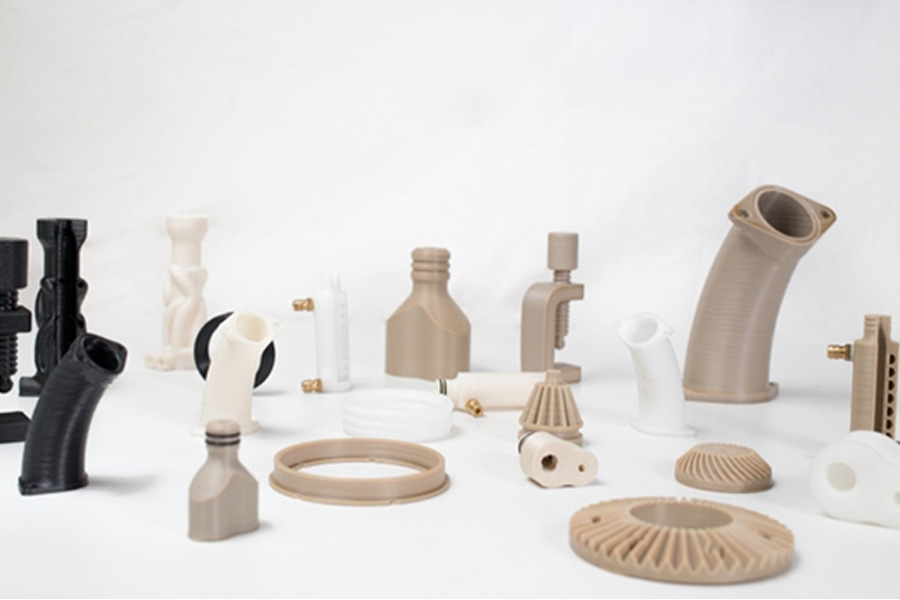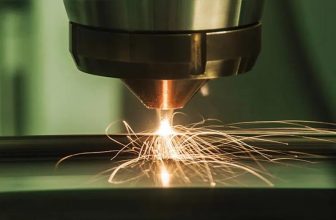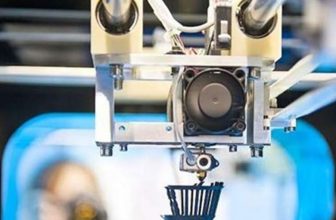
In the 1980s, the British ICI company introduced a material called polyether ether ketone, that is, PEEK. The matrix form of this material is a semi-crystalline, high-purity organic thermoplastic polymer. It has excellent mechanical properties, high temperature properties, mechanical strength and chemical resistance. These properties make it a viable material suitable for various 3D printing technologies and have been adopted by many industries.
At the end of last year, the scientific research team project “Customized Functional Bionic PEEK Bone Implant Additive Manufacturing Technology and Medical Application” led by Professor Li Dichen, Director of the State Key Laboratory of Mechanical Manufacturing System Engineering at Xi’an Jiaotong University became the “R&D Program in Key Fields of Guangdong Province” One of the selected projects.
As a representative of domestic experts studying PEEK materials, Li Dichen taught a simple analysis of the future of domestic materials.
The advantages and disadvantages of PEEK materials and their applications
PEEK resin is a special engineering plastic with excellent performance. It has high temperature resistance of 260°C, corrosion resistance, radiation resistance, stability and creep resistance, lightweight, water-repellent, stable chemical structure, non-toxic, complete Biocompatibility, low flammability, high insulation, wear resistance, good self-lubrication, etc., especially as a thermoplastic resin with excellent heat resistance, it can be used as a matrix material for high-performance composite materials. Professor Li Dichen pointed out that its performance is basically the best among current polymers, and it is similar to new materials such as polyetherimide (PEI). The strength of PEEK is close to 100Mpa. Through carbon fiber modification, it can reach close to 400Mpa, which is almost close to the performance of aluminum alloy. This means that PEEK may replace some metal applications in the future after modification and optimization.
But PEEK material also has its shortcomings: because the melting point is too high (343°C), it must be processed at a very high temperature; although it has good corrosion resistance, it will still be corroded by halogen and sodium. Limits its application in certain industrial fields. In addition, it has low UV resistance (this can be filled with carbon for better UV stability).
The non-hydrophilic nature of PEEK material is not very friendly to biomedical applications-the inability of water to adhere means that cells cannot adhere to the PEEK material. If it is applied to the biomedical field, PEEK materials need to be modified or surface modified, such as adding hydroxyapatite and other materials that are conducive to cell growth, so that these materials can be mixed with PEEK materials well; Modify the surface of the PEEK material to make it more hydrophilic and facilitate the attachment and growth of cells. Professor Li’s team has conducted a large number of experiments on some animals, and the application effect has been significantly improved. However, the non-hydrophilicity of PEEK has many benefits for some non-water-resistant applications, such as in the aerospace field, so there is no need to worry about icing…
Generally speaking, PEEK materials have opened up a wide range of application fields, and can even replace some of the main application fields of PEEK materials, such as aerospace, automotive, biomedical, electronic and electrical industries, which are commonly used materials such as metal or aluminum.
The aerospace industry needs safe and reliable materials. PEEK materials can maintain their excellent material properties even when exposed to high temperature and corrosive fuels. Therefore, parts made of PEEK material can be widely used in the aerospace field-external parts can resist rain adhesion and erosion; internal use can reduce the risk of fire, and has the advantages of excellent flame retardancy, low smoke and non-toxicity. In addition, the overall weight and fuel cost can be reduced.
In the automotive field, the fatigue resistance and chemical resistance of PEEK material make it suitable for automotive fuel management systems, while its light weight and strength enable it to replace metal or aluminum alloy components in transmission, braking, and air conditioning systems. ……It can reduce car weight and noise, and it is also the material of choice for 3D printing customized auto parts. For auto parts that have been discontinued, 3D printing with PEEK material can save 90% of the cost of original parts.
In the medical field, PEEK provides economical and innovative components with excellent wear resistance, heat resistance, electrical resistance and chemical resistance. Its applications in the field of medical care mainly include dental instruments, endoscopes, dialyzers, etc., and are mainly used in orthopedics. For example, in dental medicine, PEEK is used to replace metal handles on dental syringes or sterile boxes for root canal files. PEEK is suitable for this because the polymer can withstand up to 3000 autoclave sterilization cycles and maintain excellent mechanical strength and hydrolytic stability in hot water, steam, solvents or chemicals…
In addition to the main military, artificial bone and other high-precision applications, such as some electronic and electrical and even civilian cases-PEEK’s excellent insulation will undoubtedly make it the darling of the electronic and electrical field, and with its excellent thermal performance, PEEK polymer parts can withstand high temperatures that traditional insulators cannot withstand. And because people’s pursuit of thinner, lighter, and smarter mobile devices, PEEK materials are also very useful in mobile devices. In addition, there are some non-stick pans that we can see in our daily life, such as the use of PEEK materials that are non-toxic, high temperature resistant, non-hydrophilic, and wear-resistant; as well as fan components in air conditioners, PEEK materials are 3D printed The fan can greatly improve the performance per unit weight and make it have a better aerodynamic structure; there are also pump valves that use the corrosion resistance of PEEK materials, etc…
In order to expand the application range of PEEK materials, it is also possible to enhance the performance of some aspects of PEEK materials by means of blending modification, copolymerization modification, composite enhancement modification, filling modification, nano modification and surface modification.
Talk about the future of domestic materials
In the interview, Professor Li Dichen gave a brief introduction to the work of the research team of Xi’an Jiaotong University in terms of materials. He said that the research team of Xi’an Jiaotong University has done a lot of research in the field of additive manufacturing over the years, and has carried out a lot of purposeful layouts. Their research is mainly centered on two general directions: one is centered on the country’s major goals, such as aero engines. Additive manufacturing of blades, etc.; the other is around cutting-edge additive manufacturing research, such as metal high-performance basic materials, such as high-entropy alloys. There are also research on future frontiers such as biomedicine, cell printing and so on.
In the view of Professor Li Dichen, the performance and technology of domestic materials used in industrial applications in our country are getting better and better, including the advantages of powder spreading accuracy, hollow rate, cost control and so on. However, since the material system we are currently using is still the traditional casting and forging material system, and this material system is not completely suitable for the requirements of 3D printing, many new materials still need to be developed in depth, especially in combination with technology. When conducting material research, it should not be decoupled from the process and equipment, and solve the phase change, shrinkage, density and other related issues in the 3D printing process. Combining materials and processes, re-recognize, design, and develop from the material formulation level, so that our domestic production The material is greatly improved. This is a long way to go and requires the joint efforts of our country’s scientific researchers.
He pointed out that as a research team in a university, the research done is different from that of a company, and it does not constitute a competitive relationship. The research team does more research that the company has no power or mind to do, and then provides the company with new technologies. Lead. And enterprises also need to fully cooperate with research institutions to make basic research into engineering applications as soon as possible. This is the common direction of scientific research institutions and enterprises in the future.





